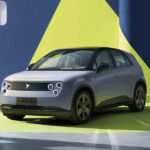Electric Vehicles (EVs) have been gaining attention for their superior performance, with a recent report from a leading motor insurance broker shedding light on the issue. According to Howden UK&I Retail CEO, Carl Shuker, EVs are involved in more accidents compared to traditional petrol and diesel vehicles, and the main reason for this trend is their speed.
Shuker revealed that there is a 26% increase in accident claims for EVs as opposed to Internal Combustion Engine (ICE) vehicles. He attributes this higher accident rate to the fact that EVs are generally faster and skewed towards the higher performance spectrum. This is further supported by the observation that high-performance ICE cars also have a higher rate of claims compared to regular cars.
The instantaneous power delivery of EVs can catch drivers off guard, leading to a different driving experience compared to ICE vehicles. Despite this, Shuker believes that the type and mix of accidents involving EVs are similar to those of other vehicles. However, he points out that while the frequency of accidental damage is higher for EVs, the frequency of serious injuries is lower due to their advanced safety features and technology.
Shuker is one of the few industry experts who directly link the higher performance and accident rates of EVs to their higher insurance costs. He notes that EVs have higher repair costs, averaging £2570 compared to £1916 for ICE vehicles. Additionally, EVs take 14% longer to repair, partly due to a shortage of qualified technicians. While repair costs and technician availability contribute to the higher insurance premiums for EVs, the high performance aspect is often overlooked.
Hertz, a major car rental company, also experienced higher accident rates with their fleet of Teslas, leading them to defleet 20,000 vehicles in January. Insurance analyst LexisNexis found that drivers transitioning from ICE vehicles to EVs are more likely to be involved in accidents during their first year of ownership. To address this issue, Shuker suggests improved driver training and better control over EV performance capabilities. However, he acknowledges that greater familiarity with EVs among drivers is the key to reducing accident rates.
In conclusion, the performance superiority of EVs presents challenges in terms of accident rates and insurance costs. While EVs offer advanced safety features, their high speed and power delivery require drivers to adapt to a new driving experience. By promoting better driver education and regulating EV performance, the industry can work towards reducing accident rates and ensuring safer road conditions for all drivers.







